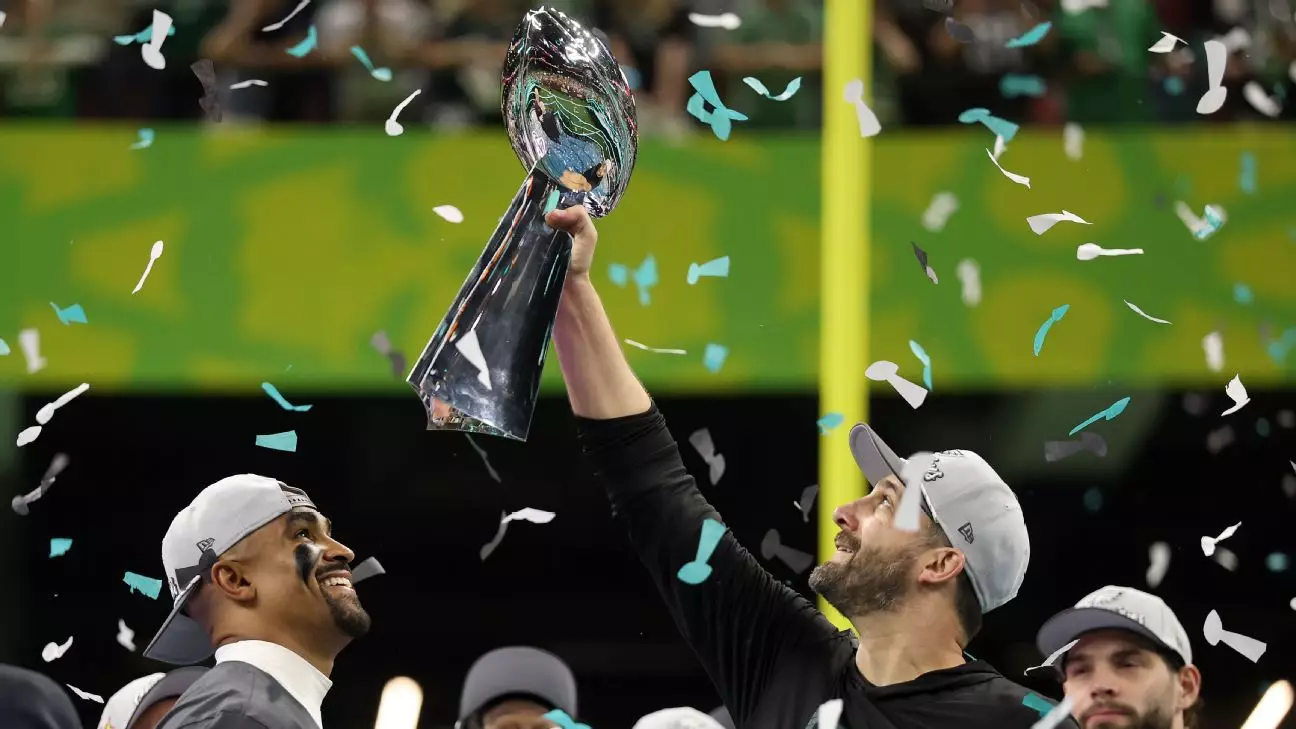The recent Super Bowl matchup between the Philadelphia Eagles and the Kansas City Chiefs created a considerable buzz in the media, culminating in an astonishing average audience of 126 million viewers. This figure, projected by Fox Sports, underscores a dramatic shift in how audiences are consuming sports content across multiple platforms. The game, broadcast by Fox, Fox Deportes, and Telemundo, along with streaming availability on Tubi and the NFL’s digital channels, illustrates an increasingly multi-faceted approach to viewership—accommodating diverse audience preferences in the process.
Streaming platforms are playing a significant role in the evolution of sports viewership. This year, an estimated 14.5 million individuals turned to streaming options to watch the Super Bowl, with Tubi alone attracting 13.6 million viewers. The free accessibility of the game via Tubi reflects a trend where viewers seek flexible options that traditional television cannot always provide. Such accessibility is a crucial factor in driving audience engagement, particularly among younger demographics less inclined to favor cable subscriptions. Even more pressing is the fact that Nielsen’s revised methodology for measuring viewership now includes out-of-home viewers across nearly all states, likely contributing to the surging numbers. Previously, Nielsen’s measurements included only about 65% of the U.S. audience from leading media markets.
A Shift in Competitive Dynamics
Another component worth discussing is the nature of the game itself. Unlike the nail-biting close contests of previous years, this Super Bowl was heavily dominated by the Philadelphia Eagles, who established a commanding 24-0 lead by the first half. This decisive outcome may have implications for audience retention rates, sparking discussions about how competitive balance in the league affects viewer loyalty. A decline in viewer engagement often follows less dramatic contests, as fans prefer tightly contested matchups that keep them on the edge of their seats.
A Cultural Crossroad
The Super Bowl is not merely a sporting event; it serves as a cultural phenomenon, drawing the attention of various public figures and celebrities. Notably, the presence of President Donald Trump and pop sensation Taylor Swift at this year’s game bridged the gap between politics, entertainment, and sports, generating buzz on social media platforms. Swift’s association with Kansas City Chiefs tight end Travis Kelce has added layers of intrigue and served as a magnet for fans outside traditional NFL demographics. Such associations only broaden the Super Bowl’s reach, enticing a wider audience to engage with the game—once again reinforcing the importance of cultural relevance in garnering viewership.
While the record viewership signifies a flourishing interest in football, broader trends indicate potential challenges ahead. The recent NFL playoffs averaged 35.2 million viewers over three weekends—down 9% from last year’s record high. Additionally, despite the Super Bowl surpassing the 100 million mark for the third consecutive year, earlier games within the season saw a decline in viewership, showcasing a complex landscape where football’s popularity is both robust yet increasingly precarious. As the NFL navigates changing viewer preferences and technological advancements, it will need to adapt its strategies to engage and retain fans effectively moving forward.
The remarkable audience figures for the Super Bowl reveal not only changing methods of consumption but also the broader cultural forces at play. It suggests an exciting yet tumultuous future for NFL viewership, necessitating further innovation and adaptation in an era defined by instantaneous access and peak audience experiences.

